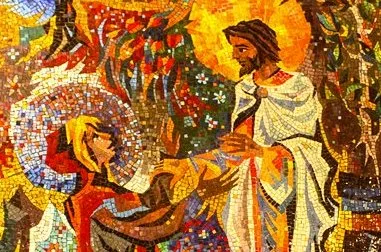Saint Spotlight Mary Magdalene
Feast Day 22 July

Saint Mary Magdalene in the garden
Gardeners’ programs seem to be very popular on TV with many people tuning in to get tips on how to improve their gardens.
Gardening programs are very spiritual, for, as the old saying has it: “we are never closer to God than when we are in a garden.”
The Easter Garden in Jerusalem was a very sad and sombre place when Mary of Magdala came to visit the tomb of her Lord. Jesus, the fairest flower of humanity, had been cut down and crushed. His body laid in a tomb. It only remained for spices to be brought to give a fitting closure to Calvary’s cruelty.
But on entering the garden, Mary found that the tomb was empty. This was a double blow. The loss of her Lord in death was now compounded by the stealing of his body. Tears blinded her eyes, and sorrow broke her heart. She had been one of Jesus’ closest friends. Rescued by him from the many troubles of her own life -seven demons were cast out of her – she accompanied the Lord on his round of preaching, and when all was lost, and all had run away, she remained steadfast by the cross with Mary, Jesus’ mother. Now, alone in the garden, she cried out her questions to anyone who would hear. And someone did.
A man – was it the gardener? – stood beside her. When he said her name, she knew him. The voice was unmistakably the Lord’s. Jesus chose Mary of Magdala before anyone else, as the first witness to his resurrection. Why? Why not Peter or John, or any of the others? Has it something to do with a woman’s heart: the heart that perseveres, long after the head has given up hope?
Mary of Magdala was faithful to the bitter end, and beyond the bitter end. For, beyond it, is the beginning of new life. The Easter garden is once again in flower. In telling the disciples, Mary told the whole world. She brought good news to us and answered all our questions about that Easter garden.
St. Mary Magdalene is one of the greatest saints of the Bible and a legendary example of God’s mercy and grace. The precise dates of her birth and death are unknown, but we do know she was present with Christ during his public ministry, death and resurrection. She is mentioned at least a dozen times in the Gospels.
In June 2016, Francis signed a decree bumping the liturgical celebration honouring the Saint from a memorial to a feast, putting her on par with the apostles. On the Church’s liturgical calendar, saints are honoured with a “memorial,” a “feast,” or a “solemnity.” Solemnities rank the highest, with feasts coming in second and memorials in third.
Adapted from the Living Word Saints and Feasts
